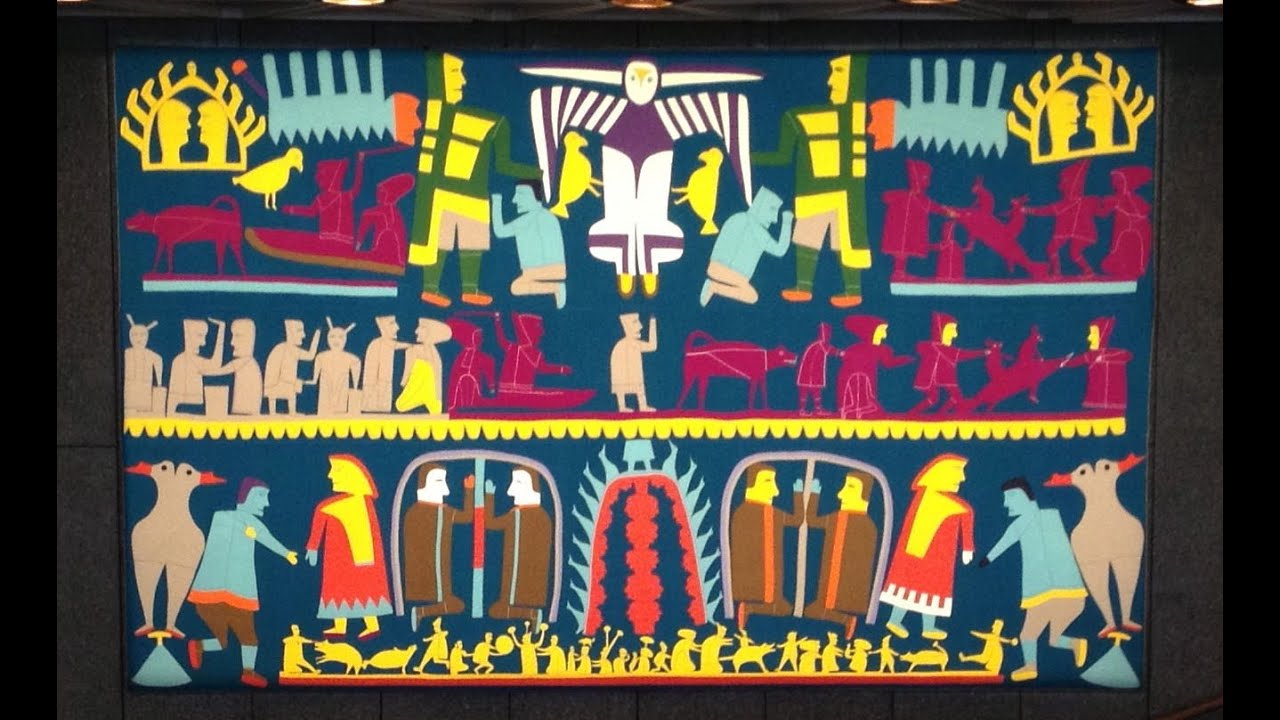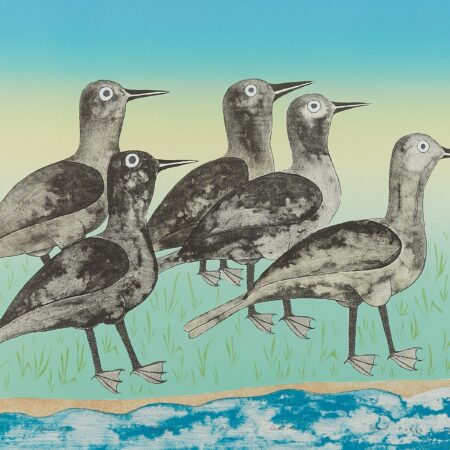
Inuit Art
Interested in selling a piece of Inuit Art?
We have received top dollar for Inuit Art. Auction is the best way to quickly and transparently get maximum dollar for your artwork.
Top 12 Inuit Artists With Value
Introduction
From intricately carved sculptures to vibrant prints, each piece tells a story of tradition, connection to the land, and the resilience of a people who have thrived in some of the world’s harshest environments. At Revere Auctions, we’re passionate about showcasing the beauty and significance of Inuit art, and we’re thrilled to introduce you to 12 remarkable Inuit artists whose work is widely recognized and admired. Whether you’re an avid collector, a newcomer to the world of Inuit art, or simply curious about the diverse expressions within Inuit culture, this list is sure to inspire and captivate.
What is Inuit Art?
Inuit art encompasses a rich tapestry of artistic expression rooted in the cultural traditions and environment of the Inuit peoples. Inuit art encompasses a wide range of mediums, including sculpture and textiles historically, and printmaking beginning in the mid-20th century. Sculptures were traditionally made with walrus ivory, but began to be made with soapstone and softer carving materials in the 1950s. Textiles were constructed with fur and skin from animals, since the climate of the land could not support the cultivation of typical plants used to produce fabric and thread. And, while James Archibald Houston traveled to Cape Dorset, Nunavut, Canada, in 1949 and brought with him printmaking supplies and suggestions to construct printing cooperatives, Inuit printmaking has roots in earlier Inuit art forms such as tattooing and ornamental inlay on textiles.
Art has played a significant role in Inuit life, serving as a means of storytelling, preserving cultural heritage, and even as a form of sustenance through the creation of tools and utilitarian objects. Today, Inuit art continues to thrive, evolving with contemporary influences while maintaining its deep connection to the land, wildlife, and spiritual beliefs of the Inuit people. Through its intricate craftsmanship, vibrant colors, and profound symbolism, Inuit art offers viewers a window into a culture that celebrates resilience, creativity, and profound respect for the natural world.
Contact our specialists to learn more about the value of your Inuit Art.
Inuit Artists
Kenojuak Ashevak (October 3, 1927 – January 8, 2013)
Kenojuak Ashevak was born on the southern coast of Baffin Island, where she lived with her two siblings, mother, and father, Ushuakjuk, who was a respected shaman and hunter, until his murder when Ashevak was very young. She rose to prominence with her carvings and drawings, though she later created prints that have become her most prized works.
Her print, “The Enchanted Owl”, was among the one of the first produced by the Kinngait Cooperative (formerly known as the West Baffin Eskimo Cooperative) in Cape Dorset, and it is one of her most prized prints. Typically, prints of “The Enchanted Owl” fetch prices exceeding $100,000 at auction depending on condition of the print, provenance, and the size of the print, among other factors. It also made history when it was printed on a six-cent stamp in Canada in 1970: the first time an Inuit woman’s art was ever printed on a Canadian stamp.


Jessie Oonark (2 March 1906 – 7 March 1985)
Jessie Oonark was born on Chantrey Inlet, though she and her family lived in Utkusiksalingmiut camps throughout the area. Eventually, they moved to Qamani’tuaq (or “Baker Lake”), Nunavut because of a steep depletion in the populations of animals that were integral to her culture. In 1979, she was forced to end her career when she developed an illness that affected the feeling in her hands.
Oonark began her artistic career with drawings, tapestries, and prints depicting people, animals, and other aspects of Utkusiksalingmiut tradition and culture. One of the icons that recurs in her work is the “ulu” (meaning “woman’s knife”). It is a rounded blade used in a plethora of tasks, but it bears connotations of femininity and strength. One of her most iconic artworks is an untitled felt tapestry commissioned in 1973 by the National Art Center representing important legends and figures in Inuit culture. Both the rarity and mastery of her other textile and tapestry art make them her most valuable work.


Karoo Ashevak (1940 – October 19, 1974)
Karoo Ashevak lived and grew up in the Kitikmeot region of Canada as part of the nomadic Netsilik people. He quickly became one of the most iconic Inuit sculptors, using whale bone, but his profound career was cut short at the tragically young age of 34, when he died in a house fire.
Ashevak’s sculptures depicted expressive faces, shamans, and myths from Inuit culture and he oftentimes emphasized the nature of the particular whalebones which he sculpted with, sometimes even highlighting their imperfections and unique characteristics. Due to his brief career, there are very limited quantities of his work.

Nuna Parr (b. 1949)
Nuna Parr, born in 1949, was adopted by Parr and Eleeshushe, who were both Inuit graphic artists. Nuna and his family lived in Cape Dorset among a community of other prolific Inuit artists, where they relocated to when Parr suffered from health problems following a hunting accident. Nuna took up sculpting at a young age, a self-taught artist from a family of artists, living in an artist colony. He derived inspiration from his natural surroundings as well as Inuit culture and spirituality.
Nuna Parr’s sculptures are primarily rendered in stone, often depicting dancing bears and walruses in sinuous stone forms. Nuna Parr is known for his depictions of animals, including walking bears, walruses, narwhals, and other arctic wildlife. Nuna Parr’s dancing bears are his most highly sought after creations.


Pauta Saila (1916 – 2009)
Pauta Saila was born on Baffin Island, lived in Cape Dorset, and died in Ontario. He began as a graphic artist, engraving—an art that he learned from his father. His work often depicted arctic wildlife and nature. He had a personal connection to these through hunting and living off of the land, which he also learned from his father. Not much later in his career, he shifted to working in sculpture.
Pauta Saila was renowned for his iconic soapstone sculptures depicting dancing bears, which are emblematic of Inuit art. His skillful craftsmanship and ability to capture the movement and spirit of the bears in stone garnered widespread acclaim. At auction, Saila’s sculptures of dancing bears have commanded high prices, reflecting both the artistic mastery and the enduring appeal of his work to collectors and enthusiasts of Inuit art worldwide.

Pudlo Pudlat (February 4, 1916 – December 28, 1992)
Pudlo Pudlat was a renowned Inuit artist from Cape Dorset celebrated for his captivating prints and drawings depicting arctic wildlife, landscapes, and traditional Inuit life. Born Coral Harbor, Pudlat moved to Cape Dorset and began his artistic career in the late 1950s, when he met James A. Houston. He swiftly gained recognition for his unique style characterized by bold lines and vibrant colors. His work often portrayed a deep connection to his Inuit heritage, offering insights into the spiritual and cultural significance of Inuit life.
Pudlo Pudlat’s artwork often incorporated elements of humor—in particular, the ones including planes and helicopters—infusing his depictions of arctic scenes with playful and whimsical touches. His ability to infuse humor into his art added depth and accessibility to his pieces, inviting viewers to engage with the rich narratives of Inuit culture with a sense of joy and levity.


Osuitok Ipeelee (1923 – 2005)
Osuitok Ipeelee was born and lived in Cape Dorset. He is known for his stone carving. Ipeelee began carving at a young age, a skill he learned from his father. He honed his skills by depicting arctic wildlife and scenes from Inuit mythology. His sculptures, often crafted from serpentine and other local stones, are celebrated for their intricate detail and dynamic compositions.


Joe Talirunili (ca. 1893 – 1976)
Born near the northernmost part of Quebec, Joe Talirunili became an iconic Inuit printmaker, but he also worked in sculpture. He suffered immense trauma as a young child when the Inuit community that his family was a part of became stranded on a treacherous and swiftly deteriorating ice floe during a migration. Several in the community perished and the incident’s impact informed art throughout his career, as did the natural world and arctic landscape. Of Talirunili’s work, his migration boat sculptures are the most prized.


Henry Evaluardjuk (1923 – 2007)
Henry Evaluardjuk was known for his intricate carvings and prints. Born in Nunavut, Evaluardjuk’s upbringing in a traditional Inuit community deeply influenced his artistic style and subject matter. He primarily worked with soapstone, creating sculptures that reflected his connection to the land and its wildlife. Evaluardjuk’s prints, often featuring scenes from Inuit folklore and daily life, also gained acclaim for their intricate detail and storytelling.


Barnabus Arnasungaaq (1924 — September 21, 2017)
Barnabus Arnasungaaq was born and raised in Baker Lake, where he lived with his wife, Fanny Arngnakik: also a printmaker and carver, and his two children, who also became sculptors in their own right. Barnabus Arnasungaaq began his artistic career as a printmaker in the iconic Baker Lake community of Inuit artists; however, he is most well known for his sculptures.
Arnasungaaq’s sculptural artwork is typically fashioned out of black soapstone, in a distinct blend of realism and abstraction. Musk oxen are Arnasungaaq’s most prolific subject.


David Ruben Piqtoukun (b. 1950)
David Ruben Piqtoukun lived with his parents and fourteen siblings in a traditional Inuit community until the age of five, when he was sent to a residential school. The experience was painful for him and he describes the traumatic experience as a “tumultuous upheaval of identity”. In his early 20s, his brother, who had studied sculpture, introduced him to the artform.
He incorporates shamanic imagery into his art and grapples with themes of societal issues in Inuit communities, including drinking, suicide, and the church. As he contends with these subjects, he primarily works on soapstone, sometimes incorporating elements composed of other mediums like sheet metal.


John Tiktak (1916 — 1918)
John Tiktak grew up in Arviat, NWT in a Padlermiut community. As an adult, he moved to Rankin Inlet to work in a nickel mine, though he began sculpting as a hobby, sometimes selling his work as souvenirs, in the early 60s. When the nickel mine ceased operations shortly thereafter, he took up sculpting seriously. His work is typically of groups of figures and shamanistic transformation.


